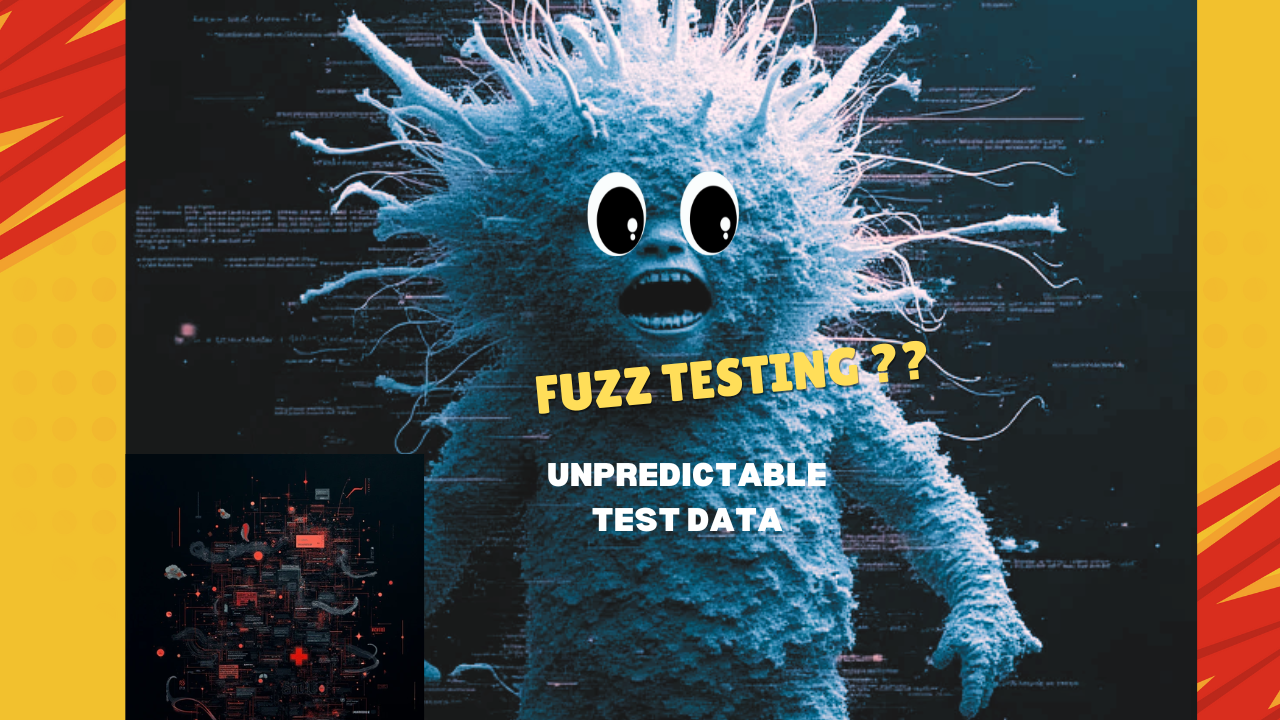How to do Fuzz Testing: Unpredictable Test Data 📑
 Rishikesh Vajre
Rishikesh Vajre
In software testing, we often focus on testing our systems with "known" conditions i.e., valid inputs, typical scenarios, and expected flows. But what happens when your system encounters something truly unpredictable? This is where fuzz testing steps in, adding an entirely new layer of reliability to our quality assurance (QA) toolkit. In this article, I’ll dive into how fuzz testing provides unique insights into system vulnerabilities by feeding unpredictable, often invalid inputs to find those “edge case” failures traditional testing might miss.
Let’s unravel the basics of fuzz testing, look at real-world examples, and see how you can integrate it into your QA practices for more robust software.
What Is Fuzz Testing? 🎲
Simply put, fuzz testing is an automated technique that bombards software with random, malformed, or extreme inputs to uncover how it handles these irregularities. Imagine entering a long string of special characters or a sequence of emojis in a text field. A well-designed app should either process this safely or throw a controlled error. But if it crashes, that’s a vulnerability—one a malicious user could exploit.
Michael Bolton, one of the prominent figures in software testing, often emphasizes the importance of questioning "what could go wrong" as part of testing. Fuzz testing helps us push those boundaries, giving a clear answer to that question with unpredictable, edge-case scenarios.
Why Edge Cases Matter More Than Ever in Today’s Software 🌐
In our world of constant software deployments, systems must interact with more services, languages, and data than ever before. API-driven environments, cloud deployments, and microservices all increase the risk of unpredictable interactions and data. For instance:
✅ APIs receiving malformed JSON payloads or extremely large requests.
✅ Frontend applications processing unexpectedly long or non-standard text inputs.
✅ Database queries encountering strange or illogical data.
Since these scenarios often lie outside the design’s intended scope, they’re exactly where fuzz testing shines.
Fuzz Testing in Practice: The Technique & How It Works 🛠️
Fuzz testing begins with a test harness or "fuzzer" that generates input data outside expected parameters. Here’s a breakdown of the process:
Set Up the Test Target: Identify the part of your application that will receive the fuzzed inputs. This could be an API endpoint, an input form, or a data processing function.
Configure the Fuzzer: The fuzzer is a tool that generates data based on a set of parameters or a random algorithm. For example, if testing an API, the fuzzer might send incorrect JSON structures, SQL injections, or oversized payloads.
Observe the Output: Monitor your system’s behavior as the fuzzer sends input. Is it throwing errors, handling them gracefully, or crashing entirely? Each type of response provides valuable data.
Log and Analyze Results: Document any unusual behavior and analyze these findings to identify any weak points in the code.
Let’s consider a basic example in Python for illustration:
import random
import string
def fuzz_test_string(length):
# Generates a random string of given length with special characters
return ''.join(random.choice(string.printable) for _ in range(length))
for i in range(5):
test_input = fuzz_test_string(1000) # Generate a long string with special characters
result = my_app.process_input(test_input) # Feed into a testable function
print(result) # Observe the outcome for handling anomalies
Real-World Bottlenecks in Fuzz Testing 🔍
Fuzz testing is powerful but not without its challenges. Here are two common Bottlenecks-Tips to overcome them:
🟢 Handling Huge Volumes of Data: Because fuzz testing involves generating massive amounts of random data, systems can become overwhelmed. One way to mitigate this is by setting rate limits or randomizing tests within a specific data size. This reduces load without sacrificing coverage.
🟢 Difficulty Isolating Errors: When dealing with random inputs, it can be tough to isolate what’s causing specific failures. Using logging tools with clear stack traces or even visual tools like graphs can help pinpoint the issues, leading to quicker debugging.
Adding Fuzz Testing to Your QA Strategy: Where to Start 🚀
Integrating fuzz testing into an existing QA environment can be straightforward, especially for systems that benefit from resilient input handling. Below are practical steps to get started:
| Step | Description |
| ✅ Select a Fuzzing Tool | Choose from tools like AFL, libFuzzer, or OSS-Fuzz. These support different environments and use cases. |
| ✅ Define Fuzzing Scope | Specify which components (APIs, forms, data processing functions) to test. |
| ✅ Automate Fuzzing Runs | Integrate with CI/CD to test continuously. Monitor the results for emerging patterns. |
| ✅ Evaluate Outcomes | Track and document any anomalies discovered, prioritizing critical ones for bug fixes. |
To demonstrate, here’s a mind map for a comprehensive fuzz testing plan:
Tools and Techniques for Effective Fuzz Testing 🔧
Choosing the right tool is critical. Here are some commonly used tools with their best-fit scenarios:
| Tool | Best Fit |
| AFL (American Fuzzy Lop) | For native applications written in C, C++. |
| libFuzzer | Integrated with LLVM, great for C/C++ libraries. |
| Burp Suite | Best for fuzzing APIs and web applications. |
| Jazzer | A JVM-based fuzzer for Java applications. |
| OSS-Fuzz | Ideal for open-source projects, integrated with CI/CD. |
Pros and Cons of Fuzz Testing vs. Traditional Edge Case Testing ⚖️
While traditional testing focuses on known inputs and specific edge cases, fuzz testing pushes boundaries in unexpected ways. Here’s a comparison:
| Traditional Edge Case Testing | Fuzz Testing |
| Requires well-defined inputs | Uses random, unstructured inputs |
| Coverage is limited to known cases | Covers unknown, unexpected scenarios |
| Manually defined test cases | Automated, extensive input variations |
| Easier to trace bugs | Errors harder to isolate but expose more flaws |
Wrapping Up: Why Fuzz Testing Should Be in Every QA Arsenal 🧰
Fuzz testing is not just a luxury for security-heavy applications; it’s a versatile tool that uncovers deep-seated issues in almost any software. When used alongside traditional testing, fuzz testing fills in the gaps left by expected conditions, providing a stronger net against unpredictable failures.
As Michael Bolton once noted, "Testers don’t just find bugs; they teach the organization about problems they didn’t know they had." With fuzz testing, you’re not just detecting issues; you’re educating your team on the system's resilience, ultimately making your product better.
So, the next time you’re planning test cases, consider throwing some randomness into the mix with fuzz testing. You’ll be surprised by the value of the bugs—and the lessons—you uncover.
Subscribe to my newsletter
Read articles from Rishikesh Vajre directly inside your inbox. Subscribe to the newsletter, and don't miss out.
Written by

Rishikesh Vajre
Rishikesh Vajre
Software Development Engineer in Test (SDET) | Automation Expert | Quality Assurance Specialist | Java | Selenium | REST API Testing